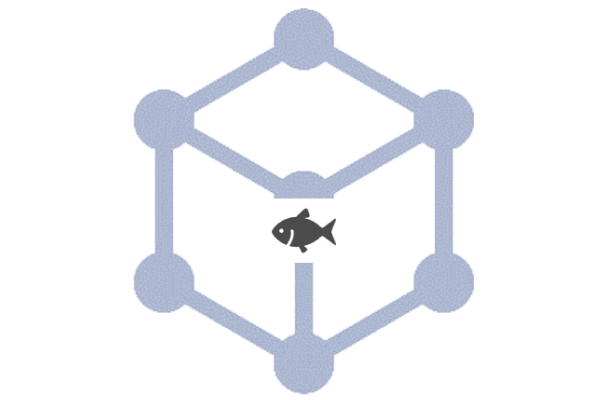Psychosomatic Medicine is a medical science based on the basic concept of the relationship between mind and body. This relationship is very important in understanding psychosomatic medicine.
Mind-Body Correlation (Psychosomatic Correlation)
Human beings have a physical aspect (body) and a psychological aspect (mind).
The body is the visible, material aspect of a person, and
the mind is the invisible, immaterial aspect.
No one knows what people are thinking in their minds. However, we try to get a glimpse of their mind through their words, actions, behaviors, and physical condition.
This “relationship between mind and body” is called “psychosomatic correlation”.

An example often used in psychosomatic medicine is the story of “lacquer (urushi) allergy. In a case where the patient was allergic to lacquer when passing under a lacquer tree, when the patient passed under a lacquer tree with the suggestion that the tree was not lacquer but another tree, the patient was not allergic even though the tree was not lacquer. However, when they passed under a non-varnish tree with the implication that it was a lacquer tree, they were allergic to lacquer even though it was not a lacquer tree (e.g., Ikemi, 1963).
The “placebo effect” of drugs is also well known today. In a review of 1082 placebo-controlled trials, the classic report found that 35% of placebo drugs actually had no effect (Beecher, JAMA, 1955).
In addition, neurogenic gastritis, which has long been common among the Japanese, is today referred to as functional dyspepsia. The stomach is one of the organs most susceptible to stress. When “stress” is combined with an increase in stomach acidity or a decrease in gastric motility, stomach acid stagnates, making gastritis and gastric ulcers more likely to occur.
Thus, the mind and body are more closely connected than we can imagine.
Mind and Body are One – David Bohm’s Parable
Our minds and bodies are always changing and are not fixed. To live is to change. Even if you were sad just a moment ago, you are already smiling. No state of mind lasts forever. The state of the body changes along with it.
The condition of the body is also changing from moment to moment. Yesterday’s physical condition is different from today’s, muscles tense and relax, the heart pounds faster and slows down, and the condition of the stomach and intestines changes rapidly. And when the body is in good condition, the mood also improves, and so on. Physical changes are accompanied by changes in the mind.
Human beings are a being whose mind and body are one, and this body (body) and mind (mind) cannot be separated. Since ancient times, it has been said “mind-body unity”.
David Bohm, an American physicist who also influenced philosophy and psychology, draws the following analogy between the mind-body relationship1).
“When a fish is swimming in a tank surrounded by four transparent walls, the reflection of the fish on the two sides at right angles to each other is the mind and body; the fish is the human entity.”

The shadows on the two walls are inseparable from each other: when one moves, the other moves. When the mind is tense, the muscles also tense, and when the mind is at ease, the body also relaxes. In this way, when the mind changes, the body changes, and when the body changes, the mind must also change.
Through this parable, Bohm states “Body and soul are not mutual influences, but rather unite to form a totality”.
Dealing with the mind and dealing with the body.
Medicine and medical science often deal with physical aspects, while psychology, as the name implies, deals with psychological aspects.
For example, if the medication improves the physical condition and reduces symptoms, psychological anxiety will decrease and become easier. Conversely, if the physical condition worsens and pain and other symptoms increase, psychological anxiety will increase and the patient may become fearful. This may lead to further worsening of symptoms.
Clinical psychology intervenes on the psychological level by providing psychological support. If psychological anxiety is reduced and ease is achieved, physical changes also occur, such as a slowing of the heartbeat and relaxation of muscle tension.
Thus, physical intervention will always result in psychological change, and psychological intervention will always result in physical change. In other words, “to treat the body is to treat the mind, and to treat the mind is to treat the body”. Therefore, it is important to approach the patient with the viewpoint that even if you are a psychological assistant who deals only with the mind, you are also (consequently) dealing with the body.
In psychosomatic medicine as well, we aim for an approach that does not separate the mind and the body, while keeping this perspective in mind. Even when using medicine, explaining the mechanism of action by saying, “This medicine has a … action,” will change the way it works. We treat this aspect therapeutically.
Looking at only one side of the mind and body can lead to an approach that drives only one wheel of the car, so a balanced perspective on both the mind and body is important.
(Kanbara K, LABs Psychosomatic Medicine, https://psychosom.net/en/column/mindbody, July 2021)
References
- Hayao Kawai, Psychotherapy and the Body, Iwanami Shoten, 2000.
